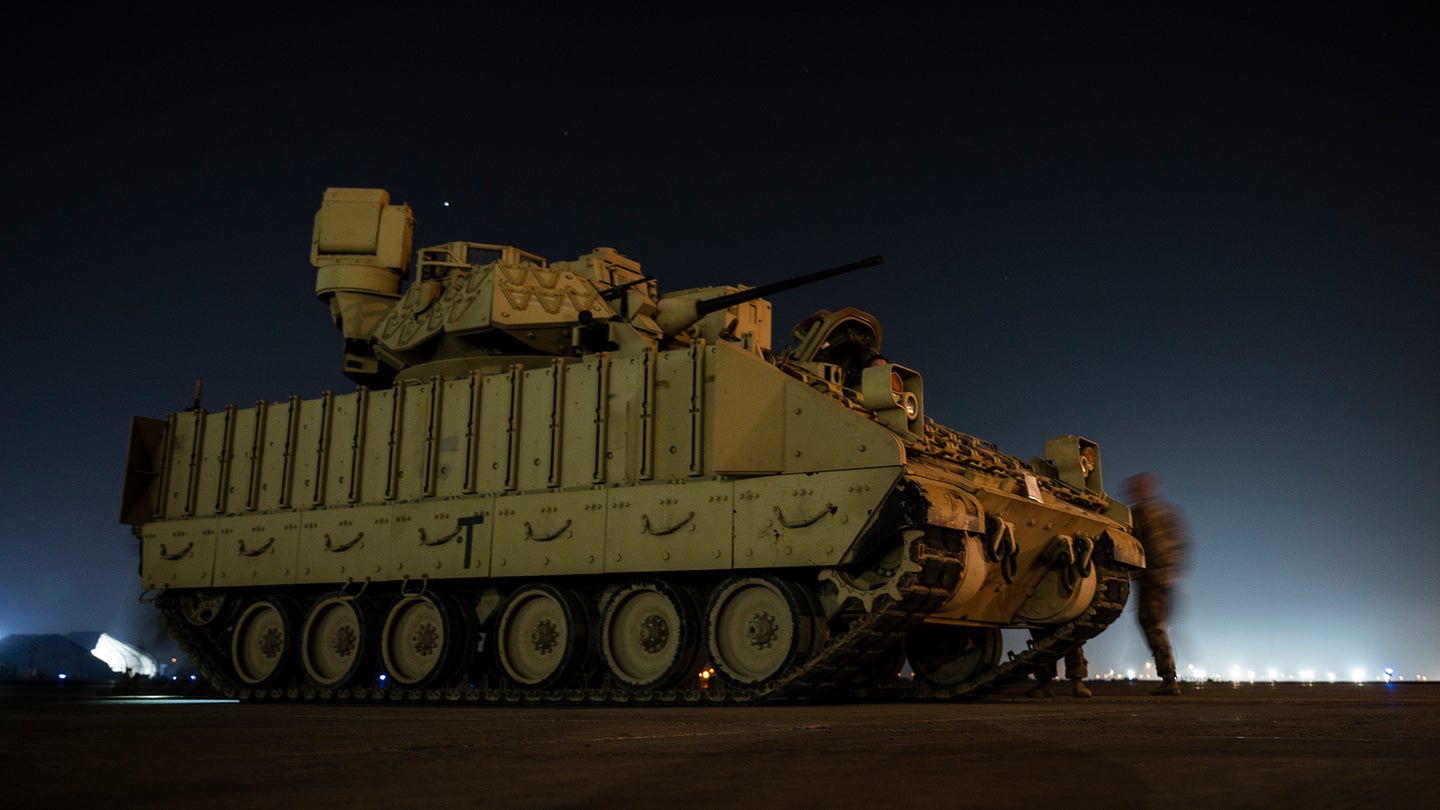
On June 26, the US Army announced a new name and a new acronym for what will replace the Bradley Infantry Fighting Vehicle. The program to do so was formerly known as the Optionally Manned Fighting Vehicle, but the vehicle itself will now be known as the XM30 Mechanized Infantry Combat Vehicle. Replacing the Bradley is no small task, as the Army has tried and failed to find a suitable next-generation version of its fighting troop carrier for decades.
Before the Army decides on a final model of the XM30, it has awarded contracts to two teams to design and build up to 11 prototype vehicles each. These teams are led by General Dynamics Land Systems, based in Sterling Heights, Michigan, and by American Rheinmetall, also based in Sterling Heights, Michigan.
“In recent years, peer and near-peer competitors of the United States have significantly increased their combat vehicle capabilities. The character of warfare has changed and our potential adversaries bring increased capabilities to the battlefield. The best way to respond is to ensure that our formations equipped with Infantry Fighting Vehicles can bring greater survivability, powerful lethality at stand-off range, and improved maneuver capabilities to the battlefield,” Dan Heaton, of the Next Generation Combat Vehicle Cross Functional Team, says via email. “The Bradley Fighting Vehicle continues to be a capable and reliable asset for our Army. As we consider the future fight, however, we need to invest in a new vehicle that can meet the needs of the Army of 2040.”
The Bradley’s origins date back to the late Cold War, when the Army sought a troop transport that could not just deliver infantry safely to battle, but whose crew could use the vehicle’s weapons and sensors to fight alongside the disembarked soldiers. This design was oriented, as with much of US military planning at the time, towards fighting in the European plains and steppes where the Army expected to face the forces of the Soviet Union.
Today, Bradleys can be seen leading armored assaults against Russian lines in Ukraine, as the country works to expel the invading army using machines passed down to it by the US and others.
For the new XM30, building upon the success of the Bradley while designing for the future means leaning heavily into automation, reducing the crew needed to operate the vehicle from three to two, while keeping room for six passengers on the inside. In addition, it’s expected the vehicle will be armed with a 50mm cannon mounted in a remotely controlled turret. It will also have anti-tank guided missiles and machine guns.
“The XM30 at initial fielding [will] include waypoint navigation, Artificial Intelligent Target Recognition (AiTR), and Advanced fire control systems all of which are designed to ease the cognitive burden of the two-person crew,” says Heaton.
That’s just the start, though. The Army is also working on ways to develop software that is independent of hardware, enabling each side of the equation to be upgraded independently. If better targeting comes from better software on the same hardware, the XM30 should be able to incorporate that.
“We don’t know which technologies will emerge in the future or the rate at which they will be ready to incorporate into a combat vehicle,” says Heaton. “Through the use of Modular Open System Architecture, we are building a vehicle platform that is intentionally designed to allow new technology to be incorporated into the vehicle at the right time. The XM30 is being designed with future upgrades in mind.”
Automation, especially on vehicles designed for combat, requires striking a balance between letting the machine automatically do tasks that require little human supervision, while ensuring human operators are fully in control of major decisions.
While new tools will change the minutiae of how the XM30 operates, the overall role of the vehicle will be the same as the Bradleys it is designed to replace.
“The XM30 is an armored combat vehicle designed to maneuver through the enemy’s security zone to deliver Infantry to positions of advantage to accomplish the unit’s mission,” says Heaton. “The focus of the autonomous behaviors is on reducing the cognitive burden on the crew and allowing formations to generate combat power faster than our adversaries.”
The post The Army’s next armored troop transport will have AI target recognition appeared first on Popular Science.
Articles may contain affiliate links which enable us to share in the revenue of any purchases made.
from | Popular Science https://ift.tt/bwMS9h5




0 Comments